Grow your patient base with proven 2026 healthcare SEO: keywords, structure, and local rankings built by an agency that’s optimized 150+ healthcare providers.
5.0

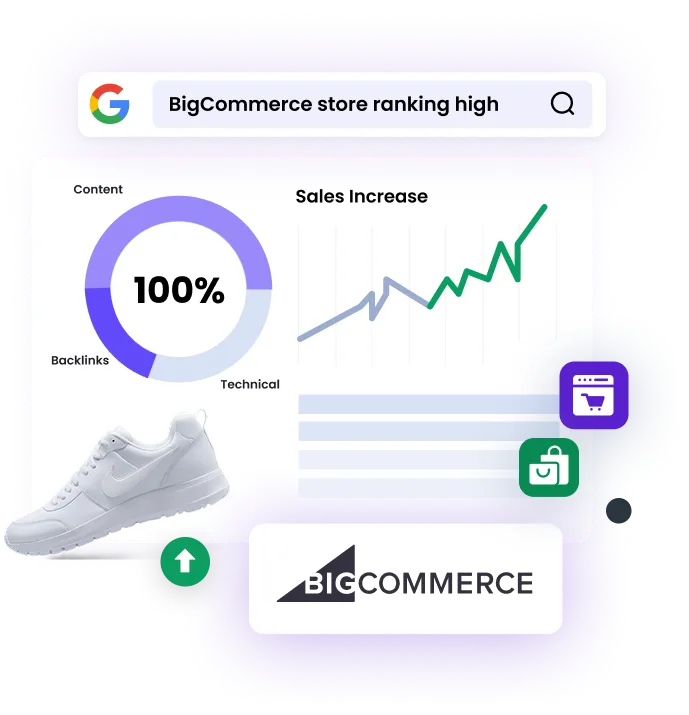

Clinics often struggle to rank locally, and patients tend to distrust healthcare ads, making paid campaigns costly and less effective without solid organic visibility.
Most providers still depend on referrals, hardly enough in a market of 3+ million competitors. Add education gaps, insurance delays, and compliance hurdles, and marketing often gets sidelined.
Healthcare SEO fixes that. The right strategy builds local visibility, trust, and qualified leads. Below, we’ll share the exact framework our medical SEO agency used to help 150+ medical centers and healthcare companies rank higher and drive real patients, even under strict Your Money, Your Life (YMYL) rules.
Before you can attract patients, you need to understand what they’re searching for: their health concerns and the exact terms they use to find care. Let’s understand how to find and use those keywords.
Start by listing your core services, such as:
Then use tools such as Ahrefs, SEMrush, or Google Keyword Planner to see how often these terms are searched and how competitive they are. Prioritize keywords with substantial search volume and realistic ranking potential.
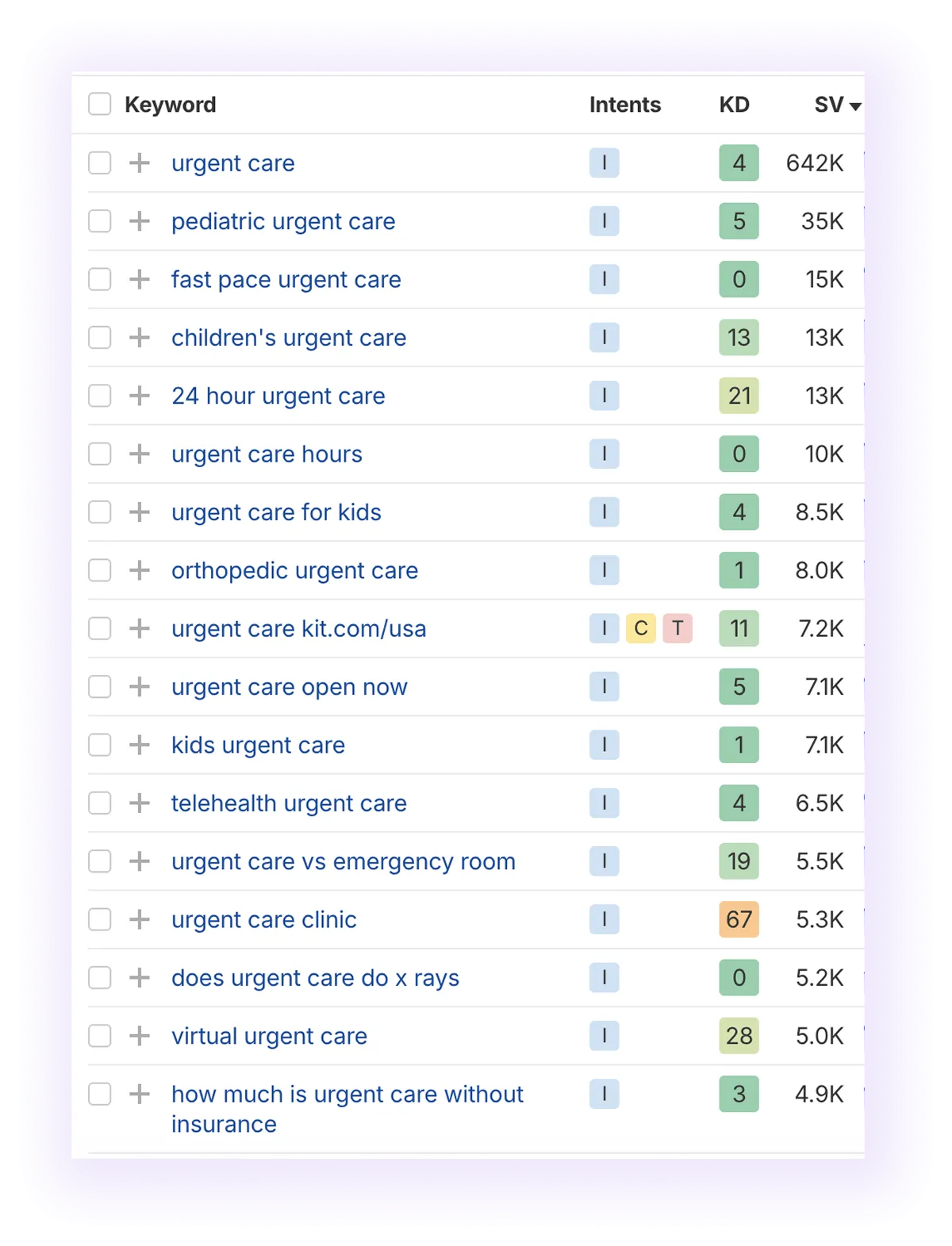
Don’t stop at your main terms. Expand into related searches, phrases like “healthcare system,” “healthcare company,” or “healthcare services,” to reach patients who may be comparing providers or exploring treatment options.
Because most patients search locally, narrow your research by region.
In Ahrefs, for example, search “urgent care”, apply a location filter, and exclude “near me” to uncover which states or cities have the highest demand.
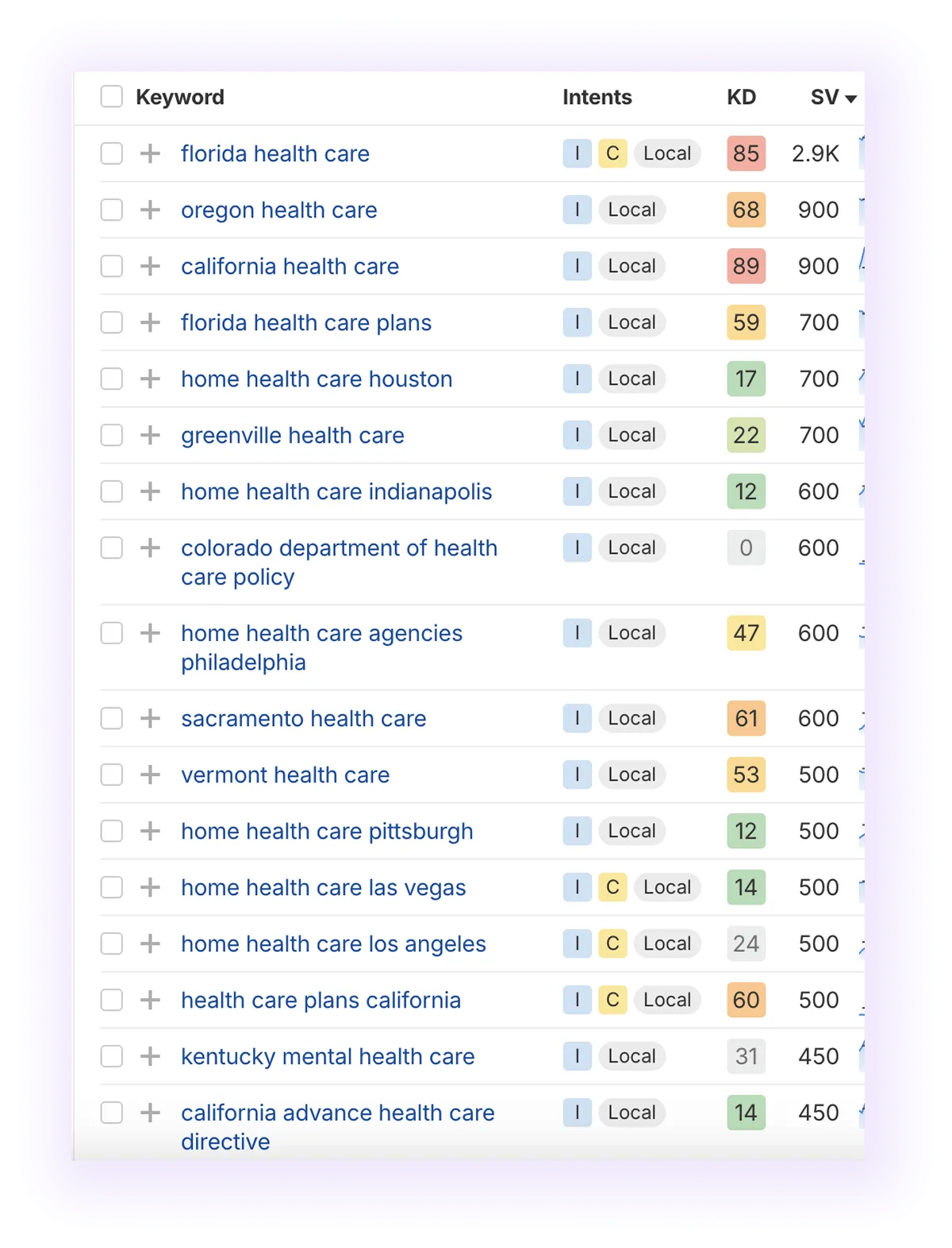
Finally, study what’s already working for your competitors’ medical SEO. Check:
These insights help you craft content that matches patient intent and positions your clinic above the competition. The result is improved SEO for healthcare providers.
The first 15 keywords work best for promoting your services, while the last 15 focus on patient education. Both support medical search engine optimization.
If you’d like a list of keywords your patients search and a tailored plan for each, reach out to our healthcare SEO agency. We’ll help you turn searches into real results.
Once you’ve gathered your service and location keywords, move to the next stage of medical SEO: organize them into a clear website structure. This hierarchy defines how your pages connect, how keywords are distributed, and how both Google and patients navigate your site.
Every healthcare website should include three key static pages:
Keep these pages in your top navigation for faster, easier access, improved SEO for healthcare providers, and better UX.

If your healthcare organization offers multiple treatments or specialties, create a dedicated page for each service. Each page should target keywords that include both the service name and location. For example:
Add these pages under a “Services” tab in your main navigation so visitors can easily explore all offerings.
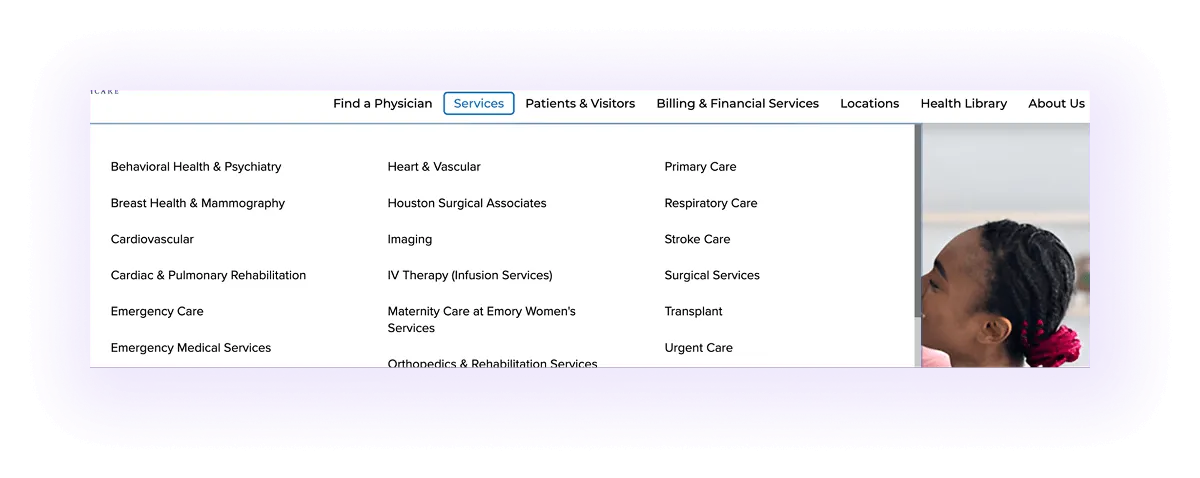
If you provide too many services to list individually, create a single services overview page that links to each detailed service page.
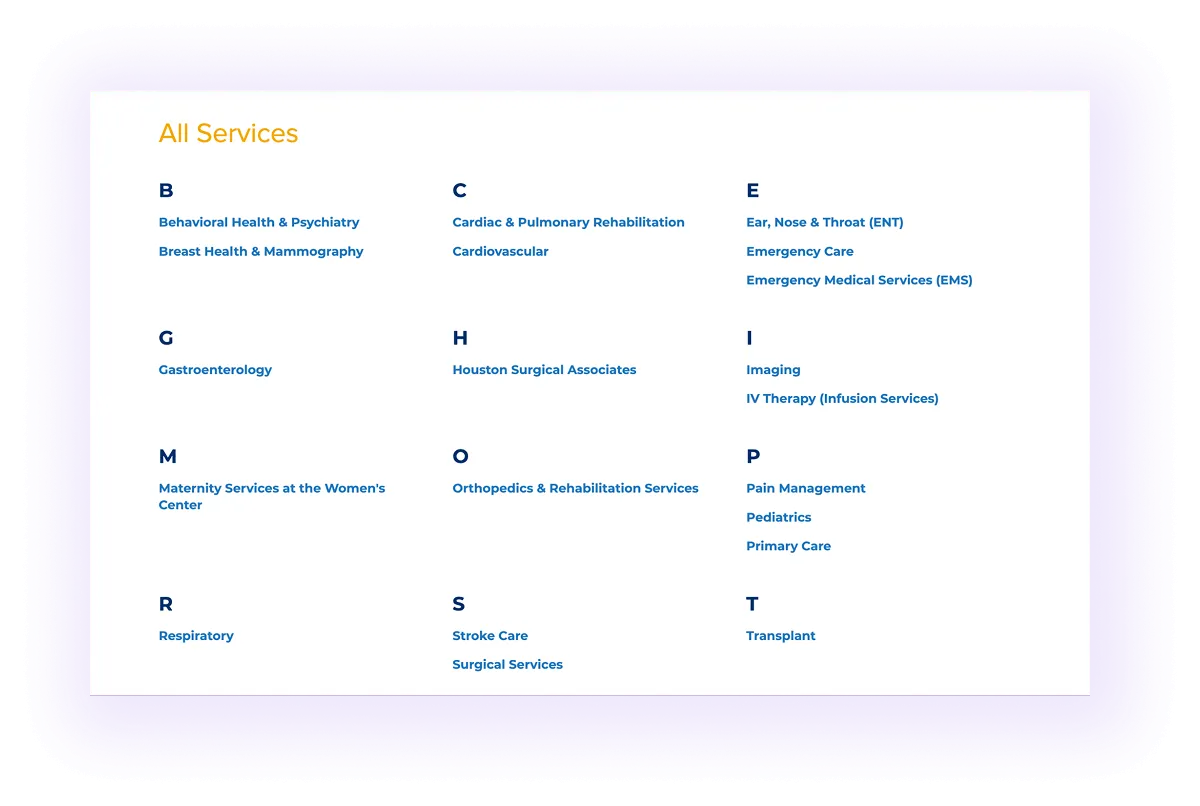
Both ways you’re helping your medical search engine optimization.
If your clinic has multiple providers, create a dedicated page for each one. These pages serve two main goals:
Each provider page should feature:
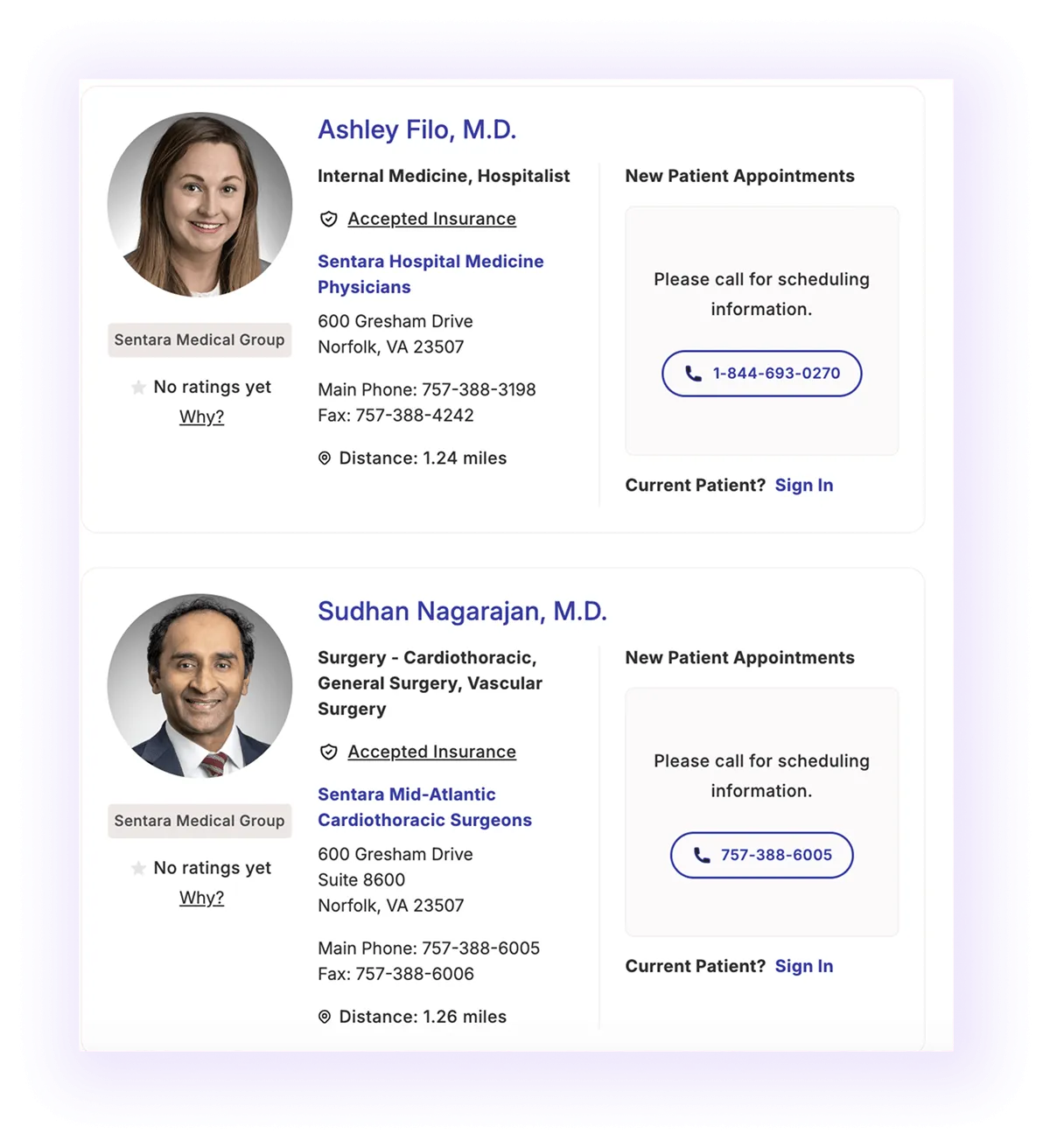
Patients search for care close to home, so create dedicated local pages for each location. This helps your clinic appear in city-specific searches and makes it easier for patients to find you online. Let’s look at some examples of local service pages with keywords:
Include a location hub on your website that lists all your clinics, hospitals, or facilities. It helps patients quickly find the nearest care option while strengthening your local SEO for medical clinics across multiple areas.
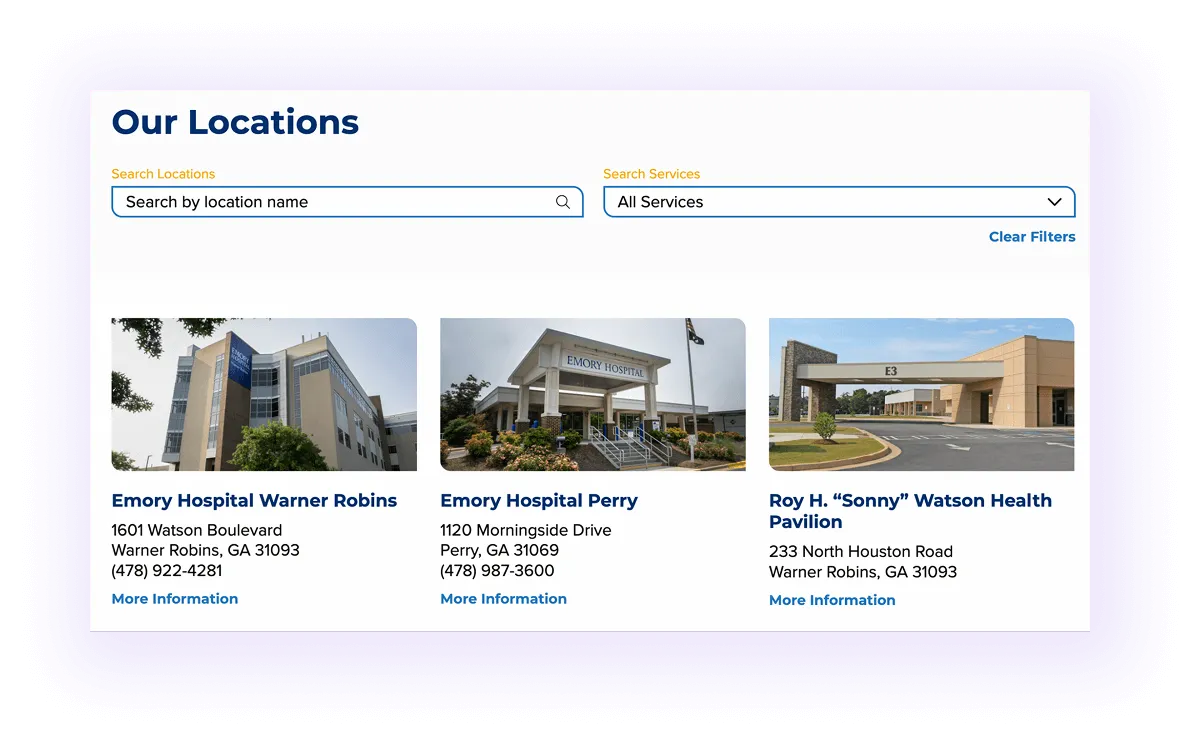
Patients don’t always search for a clinic first. They start with questions about symptoms or care. For example:
Publishing blog content that answers these questions helps patients discover your clinic while building trust and credibility. Your blogs should:
Stop Guessing Your Healthcare Website Structure—We Will Show You Exactly What Pages You Need
SEO for the healthcare industry isn’t simple. You can’t just copy a competitor’s site structure and expect to outrank them.
Contact our healthcare SEO agency, and we’ll build a strategy tailored to your specific services, patients, and compliance needs, one that drives qualified leads.
Location pages are the backbone of local SEO for healthcare providers, but your approach should depend on whether you run a single-location clinic or a multi-location medical center.
Let’s start with single-location practices.
If your clinic serves a single city or region, include your target location in all key pages, especially your home and service pages.
For example, if your clinic is in Houston, optimize your keywords like this:
Home Page: “health care houston,” “medical center houston,” “houston health care”
Service pages:
Use these location-based terms throughout your content, headings (H1, H2), meta titles, and descriptions.
Don’t forget to include them in image file names and alt text; every detail helps Google understand where you operate and who you serve.

If your healthcare organization operates in multiple cities or states, your local SEO strategy should expand to target each area individually. Use keywords such as:

Create a location hub page that lists all your facilities in one place. Include an interactive map and links to each individual location page. This improves both user experience and local SEO performance.
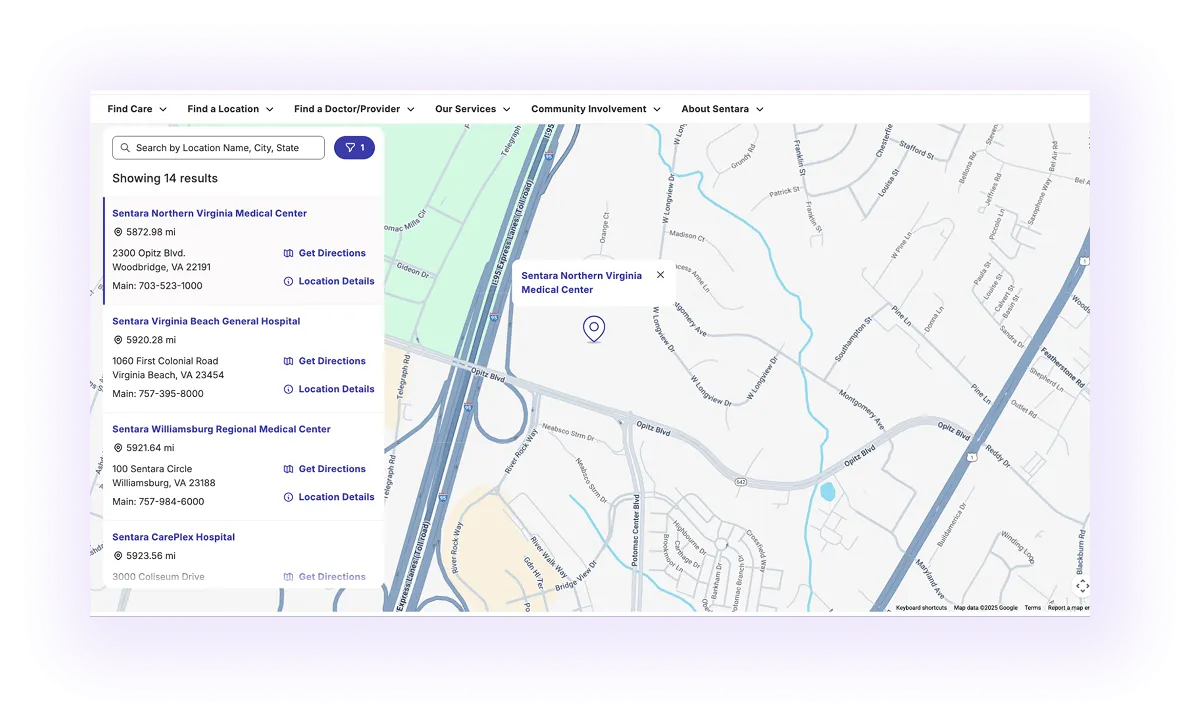
Keep your URL structure clean and consistent to support healthcare search engine optimization. A logical structure helps search engines and users navigate your locations easily.
Note: Even if you offer telehealth services, you should still create dedicated pages for each physical location where your team delivers in-person care, treatment, or assessments. This will imporve your chances to rank and strengthen your general medical search engine optimization.
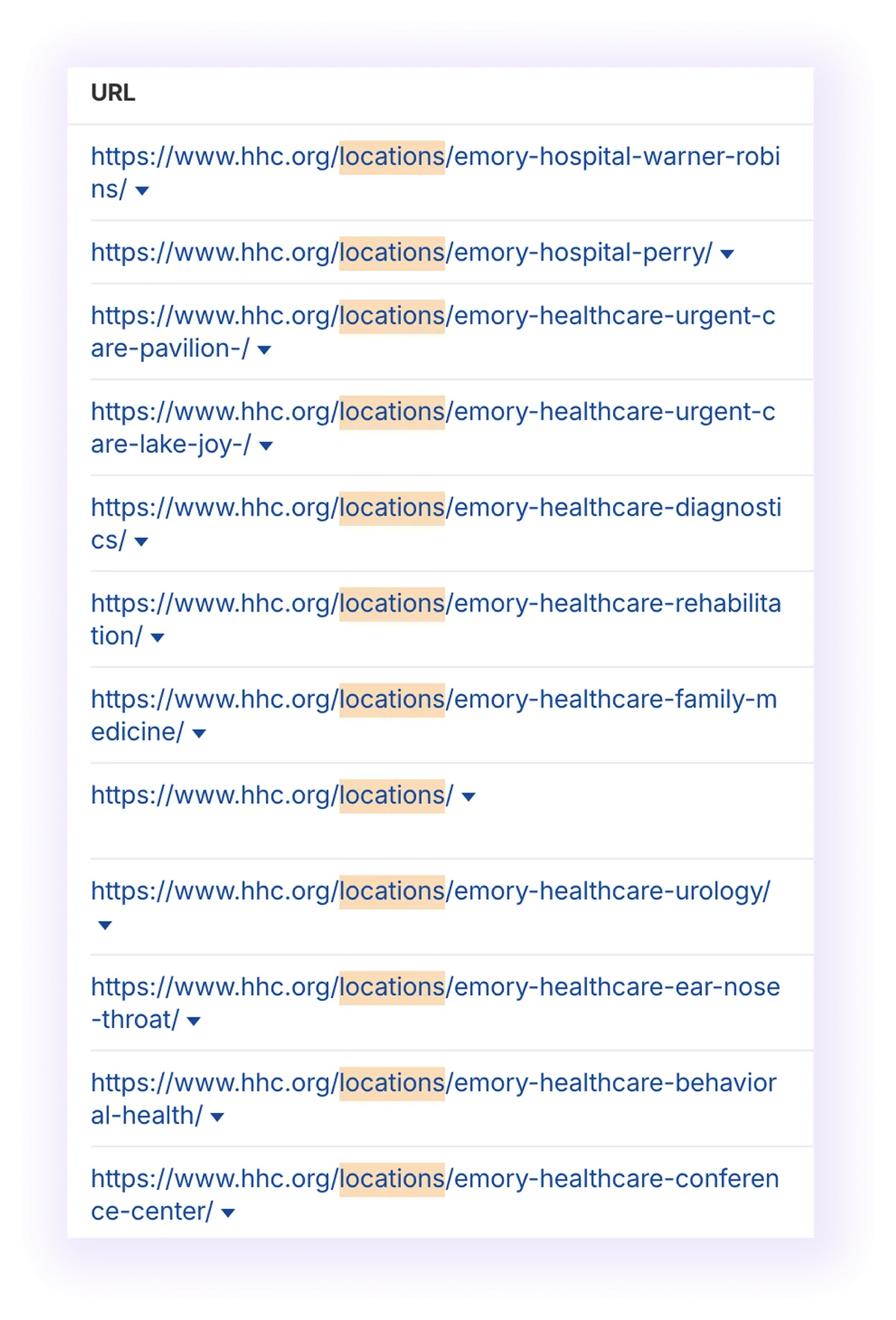
When patients search “healthcare center near me” or “urgent care in houston,” Google highlights nearby clinics in Maps, not just regular results.
With 77% of patients reading reviews before choosing a provider, an optimized Google Business Profile (GMB) is vital. Optimize it by following these steps:
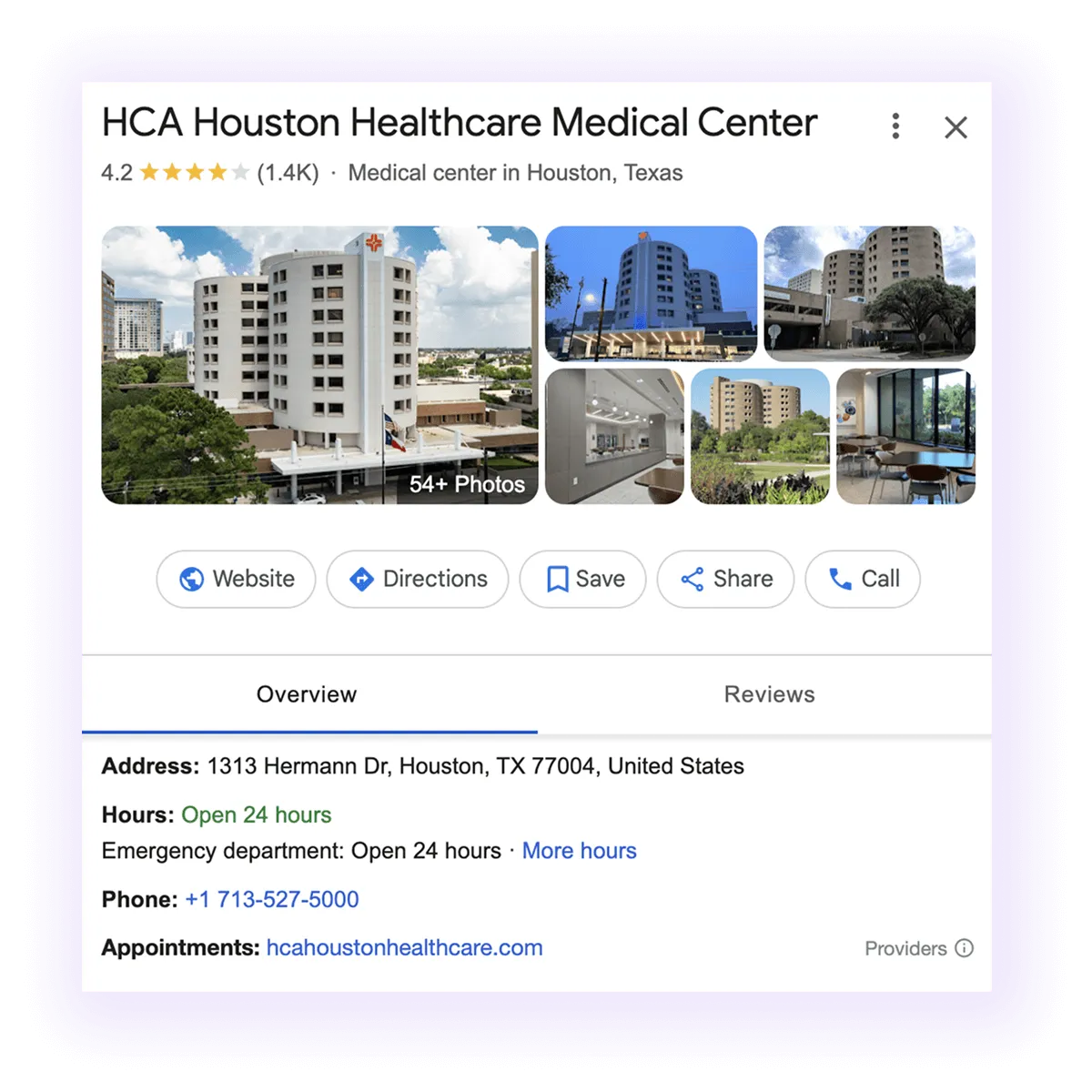
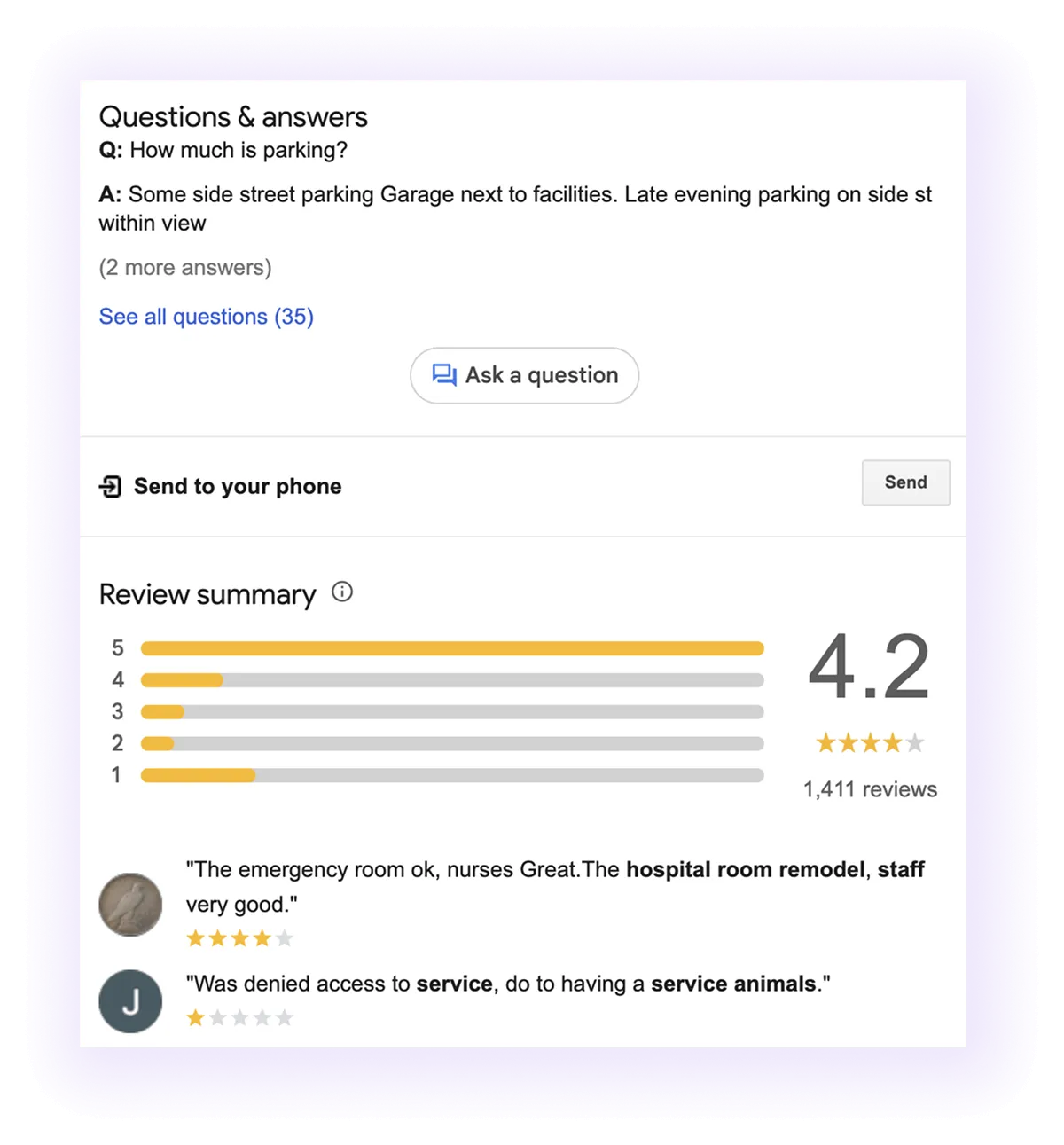

After optimizing your healthcare GMB, you have improved SEO for medical clinics, and your profile will start showing up in local searches.

Even with solid keyword research and a well-structured site, Google won’t rank your healthcare center without high-quality, patient-focused content. For proper medical SEO, every page must deliver real value, relevance, and trust. Here’s how to create it:

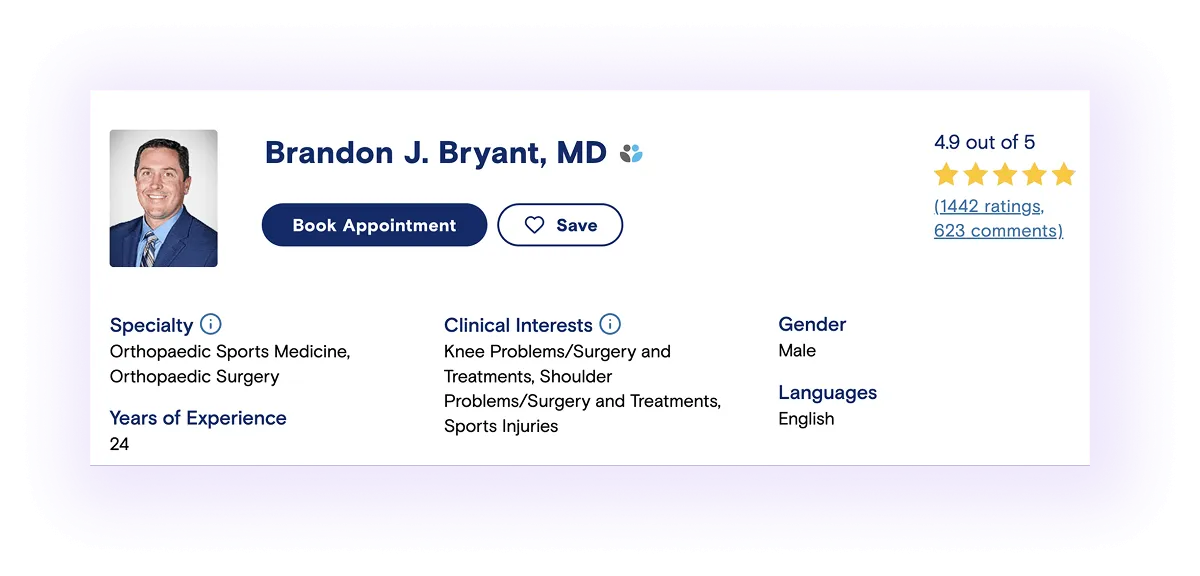


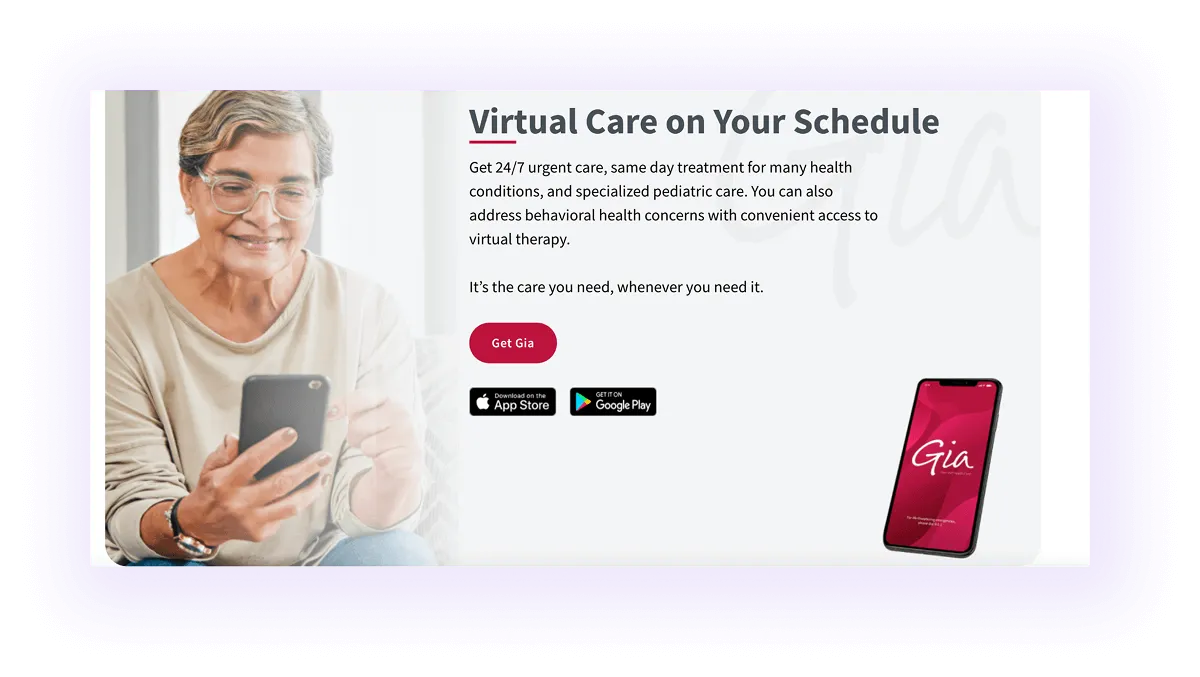
As we discussed earlier, many patients begin their healthcare journey with questions.
Creating educational blogs that answer these questions helps you reach patients early and build trust. It also strengthens your service pages and helps with healthcare search engine optimization through a pillar clustering strategy.
You choose a main service page (e.g., “urgent care houston”), and create supporting blogs around related patient questions, like:
Then, link each blog back to the main service page to boost its SEO authority.
To find strong blog topics, use Ahrefs’ Questions tab.

Or check Google’s People Also Ask section to see what patients are searching for.
To make these blogs provide real value:


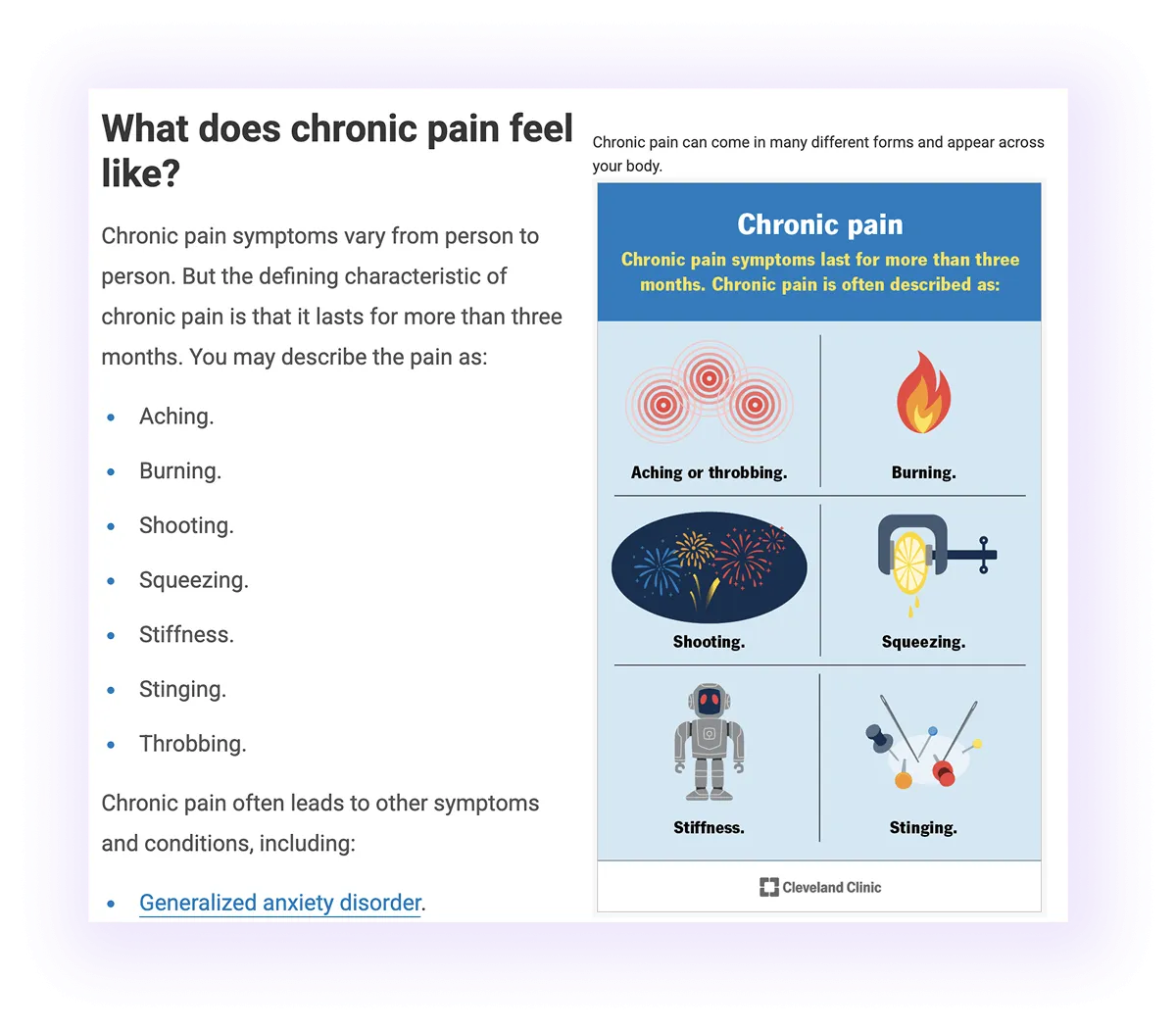

Even with great content and a strong site structure, your medical website SEO won’t perform without solid technical SEO for healthcare providers. You should focus on and optimize a few important metrics:
Let’s look at how to optimize each of these for your healthcare site.
An XML sitemap helps Google identify which pages to crawl and rank. Include all key pages (your home, service, doctor, and location pages) and set clear crawl priorities:
Also specify each page’s change frequency and last modified date to keep your site fresh in Google’s index.

A robots.txt file controls what search engines can and can’t crawl. Block low-value or duplicate pages, and allow only high-value sections (services, locations, and blog posts) to ensure efficient crawling and indexing.

To help Google understand your site and display rich results, like ratings, FAQs, or services, you need to add structured data (schema markup).
A proper schema helps Google:
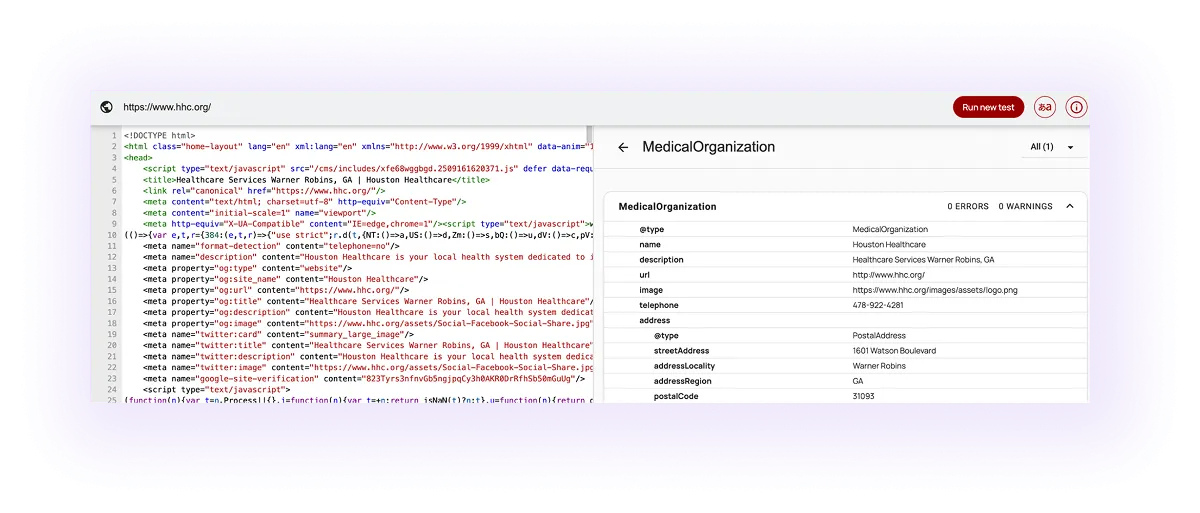
Here are recommended schema types for healthcare websites:
You can explore additional medical schemas at schema.org.
After implementation, always verify your markup using Google’s Schema Validator Tool.
A clear, consistent URL structure helps medical SEO: Google starts understanding your pages. Here are the most essential best practices to keep for healthcare website URLs:
Good Example: yourclinic.com/services/urgent-care-houston
Bad Example: yourclinic.com/Page?id=UrgentCareHoustonFinalVersion123
Internal links strengthen your site’s structure for both search engines and patients. They:
There are several types of internal links that can be used effectively. Here are the main ones with examples:
Here is an example of service-to-service links:
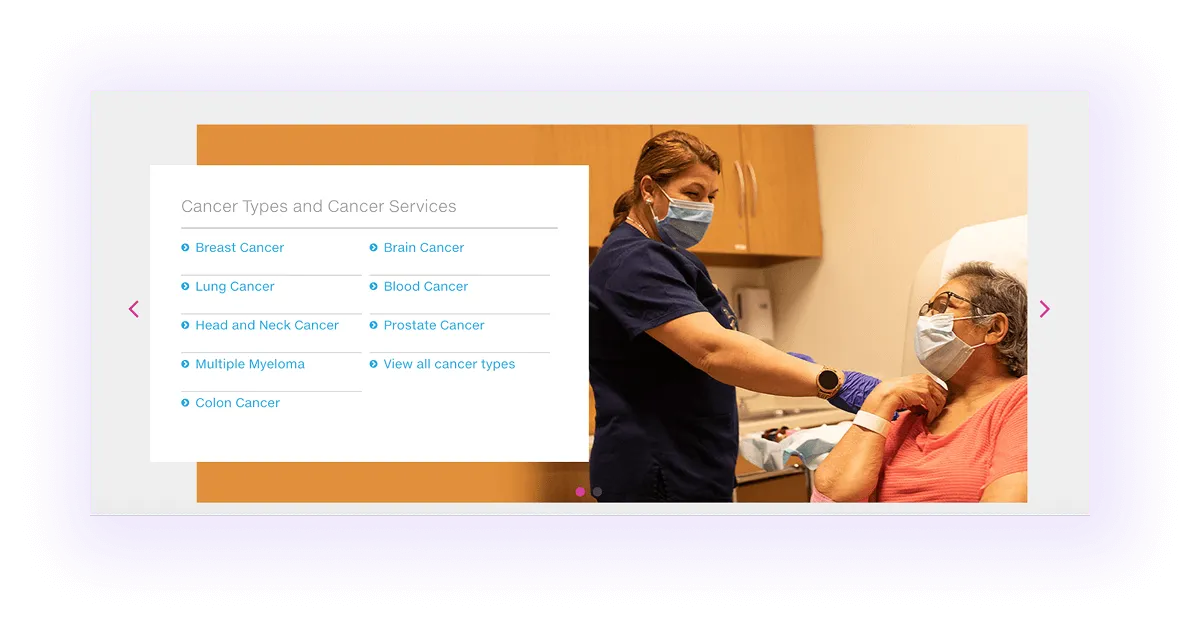
Over 50% of patients search for doctors or clinics on their mobile devices. To convert them, your site must load fast and display flawlessly on every device. Key steps for this healthcare search engine optimization:

Patients searching for care are already stressed; they won’t wait for slow pages. Google also ranks fast websites higher, so the medical website SEO performance directly impacts visibility. Here’s how to improve speed:
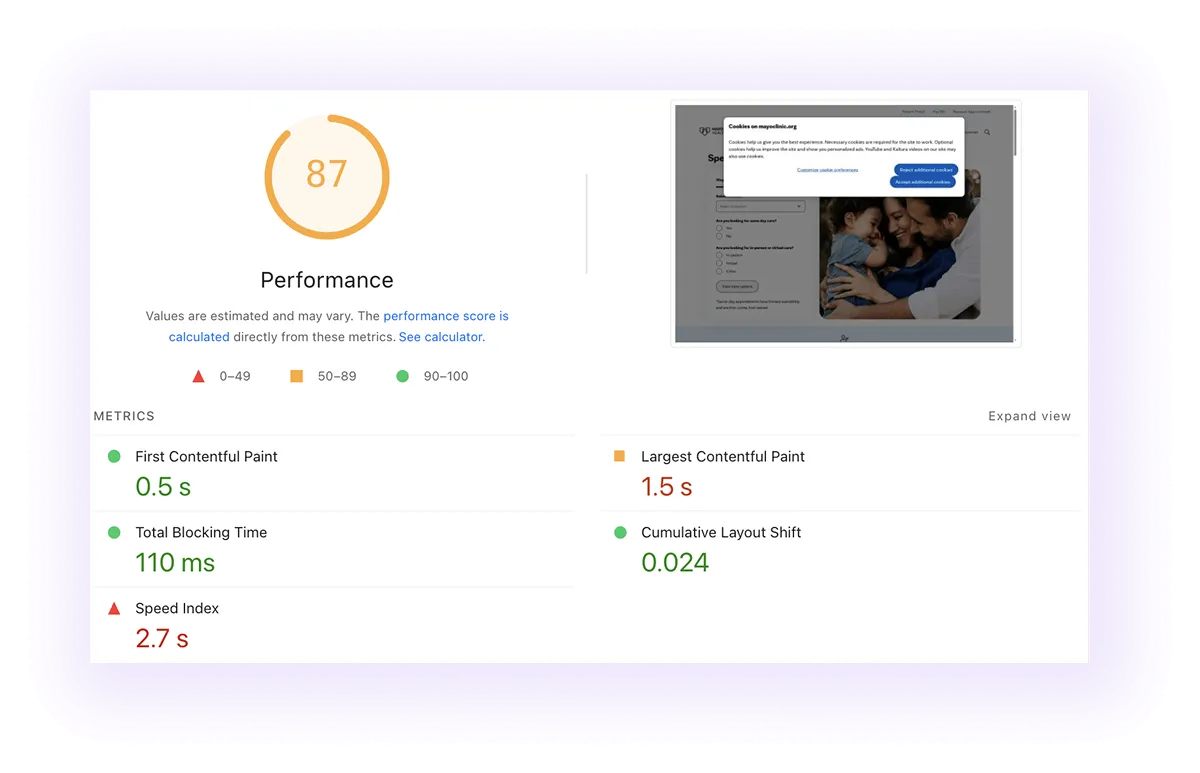
Check performance in PageSpeed Insights or GTmetrix, and aim to meet Google’s Core Web Vitals benchmarks:
Passing all Core Web Vitals ensures a smooth, reliable experience for patients and stronger search rankings.
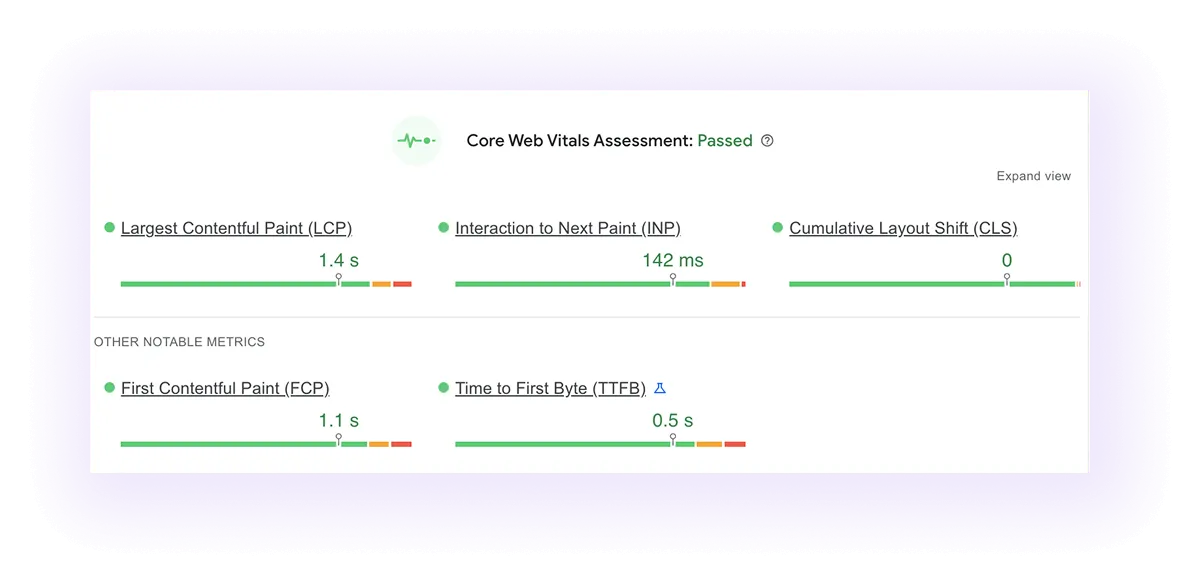
As your healthcare site evolves, add or remove pages carefully. Changes can impact SEO. Run a monthly audit to stay optimized. Check:
Regular audits keep your site fast, secure, and ranking well. And if you need support from an experienced healthcare SEO agency, get in touch, and we’ll run a technical SEO audit for you.
Your website’s technical SEO is solid; the next step is building authority beyond your own domain. Google views backlinks from trusted, relevant sites as votes of confidence, its version of digital “word-of-mouth.”
To strengthen your credibility and search rankings, focus on three core backlink strategies tailored for healthcare websites.
Target relevant healthcare sites for backlinks, such as:
Within these platforms, you can use two main strategies:
Patients often check more than Google Reviews. They also browse medical and business directories before choosing a provider. Listing your clinic on reputable directories boosts visibility and trust, making your medical SEO impeccable.
Recommended directories for healthcare providers:
Include in your profile:
For example, this is how well-optimized healthcare company profiles appear on Yelp.

Digital PR focuses on earning backlinks and media coverage from reputable publications like Forbes or health-focused outlets such as HealthTech Magazine. This is not a regular item in healthcare search engine optimization, but it helps strengthen your site’s authority and visibility through credible mentions.
Here’s how to run a digital PR campaign:
Each published feature earns a credible backlink, enhancing your healthcare site’s SEO and reputation.
Once your on-site and off-site medical website SEO work is done, the real test begins: tracking how well it performs. Use these tools to measure what’s working and where to improve:
The Takeaway: Consistent tracking turns your SEO plan into a data-driven system that steadily increases patient visibility.
Patients are looking for healthcare services like yours. Let’s make sure they find you first. Contact us for tailored healthcare SEO that drives local traffic and boosts your visibility.
Submit the form - Get Free Proposal
%202.png)
24 hours